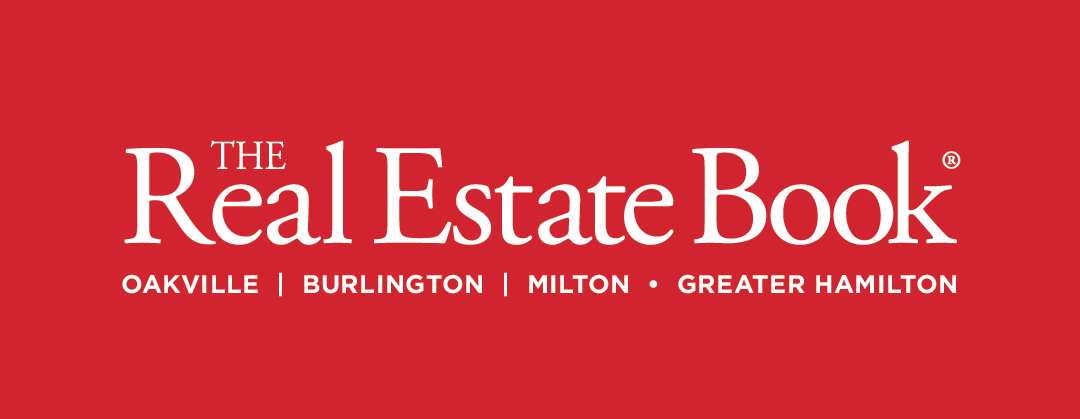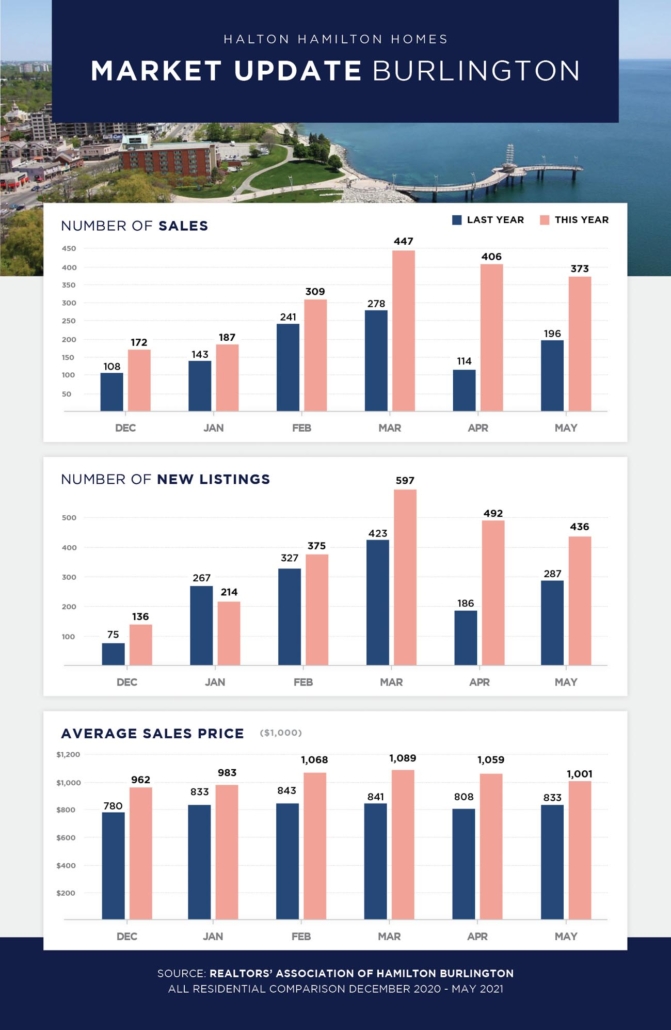It’s no secret that the housing market has been booming since the early days of the pandemic, but just how crazy is it? The Toronto Regional Real Estate Board (TRREB) recorded home sales at the second-highest level on record for October 2021. Inventory remains at an all-time low, with new listings down almost one-third compared to October 2020.
In the Oakville residential area, buyers spend roughly $1.3 million on a new home, up over 30 percent from last year. The average detached house is selling for $1.679 million, an increase of 33 percent over 2020 prices. With inventory continuing to decline, many residents are forced to move out of the area to acquire an affordable home, if we consider “affordable” as stretching families to their financial limit. And while the price of a home has increased significantly, there have been fewer actual sales across most of the Greater Toronto Area (GTA), except for the condominium market, which has made a strong comeback. The number of homes sold through the MLS® System of the Oakville-Milton and District Real Estate Board showed an overall decline of 15.5% compared to the same time last year.
While it may sound discouraging for the home buyer to see such inflated house prices, the strong market represents a rebounding economy, a reason to be optimistic.
“The tight market conditions across all market segments and areas of the GTA is testament to the broadening scope of economic recovery in the region and household confidence that this recovery will continue,” said TRREB Chief Market Analyst Jason Mercer.
However, with that comes a renewed need for affordable housing solutions and experts agree the government needs to step in.
“The only sustainable way to address housing affordability in the GTA is to deal with the persistent mismatch between demand and supply. Demand isn’t going away. And that’s why all three levels of government need to focus on supply. The federal government has stated that collaboration with provinces and municipalities is required. This collaboration could be spearheaded, at least in part, with housing-related incentives tied to federal infrastructure investment,” said TRREB President Kevin Crigger.
So, if demand is so high, it begs the question – why is inventory so low?
For one thing, housing development slowed considerably during the pandemic, with some builds just starting to pick back up again. And while builders may now have the green light, soaring lumber prices have made construction more costly and complex. The supply chain has been backed up for almost two years which results in even more delays. Existing plans have either been scrapped altogether or require builders to accept losses, neither a favourable option. In many cases, projects have been put on hold until corporations assess the pandemic’s overall impact on the construction sector.
Outside of Toronto, many suburbs have seen changes in zoning to protect the Green Belt. While this is a positive for protecting the environment and green space, much of the current zoning is outdated and requires a new strategy to consider the growing population while protecting vulnerable areas.
In addition, many homebuyers who at one time could list their home knowing they’d find something quickly once it sold are now afraid that low inventory means not finding a property in the area they want or at the price they can afford. Bidding wars also turn many homebuyers off. The high stress of multiple bids and a highly competitive market create a better argument for staying put and upgrading the current home instead.
Wherever you sat on the spectrum this year, it was undoubtedly an exciting market to watch.
By: Julie Achtermeier
It’s no secret that the housing market has been booming since the early days of the pandemic, but just how crazy is it? The Toronto Regional Real Estate Board (TRREB) recorded home sales at the second-highest level on record for October 2021. Inventory remains at an all-time low, with new listings down almost one-third compared to October 2020.
In the Hamilton-Burlington residential area, single-family detached properties are the most competitive, with an average price reaching a new record of $1,000,000. Townhouses had an eight percent increase in sales compared to September 2021, yet overall, sales began to dip slightly after the summer months.
“In line with seasonal trends, July and August tend to have fewer new listings and sales, which is exactly the case here,” says Realtors’ Association of Hamilton-Burlington (RAHB) President Donna Bacher. “Even though we have fewer active listings and sales, we are also seeing a slight dip in the average sale price. Overall, the same story continues, and that is that the level of inventory remains at critically low levels. We definitely need more supply on the market.”
Current Hamilton MLS® stats indicate an average house price of $877,800 as of October 2021.
Despite the slight drop in sales prices, there is still an urgent need for affordable housing solutions, and experts agree the government needs to step in.
“The only sustainable way to address housing affordability in the GTA is to deal with the persistent mismatch between demand and supply. Demand isn’t going away. And that’s why all three levels of government need to focus on supply. The federal government has stated that collaboration with provinces and municipalities is required. This collaboration could be spearheaded, at least in part, with housing-related incentives tied to federal infrastructure investment,” said TRREB President Kevin Crigger.
So, if demand is so high, it begs the question – why is inventory so low?
For one thing, housing development slowed considerably during the pandemic, with some builds just starting to pick back up again. And while builders may now have the green light, soaring lumber prices have made construction more costly and complex. The supply chain has been backed up for almost two years which results in even more delays. Existing plans have either been scrapped altogether or require builders to accept losses, neither a favourable option. In many cases, projects have been put on hold until corporations assess the pandemic’s overall impact on the construction sector.
Outside of Toronto, many suburbs have seen changes in zoning to protect the Green Belt. While this is a positive for protecting the environment and green space, much of the current zoning is outdated and requires a new strategy to consider the growing population while protecting vulnerable areas.
In addition, many homebuyers who at one time could list their home knowing they’d find something quickly once it sold are now afraid that low inventory means not finding a property in the area they want or at a price they can afford. Bidding wars also turn many homebuyers off. The high stress of multiple bids and a highly competitive market create a better argument for staying put and upgrading the current home instead.
Wherever you sat on the spectrum this year, it was undoubtedly an exciting market to watch.
By: Julie Achtermeier
Over the past ten years, we’ve seen a steady climb in real estate prices across Ontario. Despite some fluctuations over the years, prices have remained high while interest rates have remained relatively low. The onset of the pandemic 18 months ago caused a surprising spike in house prices, especially in the suburbs, as families moved outside city limits for more space and a new remote work lifestyle. Lack of inventory led to bidding wars becoming the norm, and it wasn’t unusual to see a home sell for $100K over asking.
Almost two years later, the market is beginning to stabilize with prices levelling out, yet the overall average sale price has not dropped.
“There is such low inventory that if a property gets nine offers, the eight whose offers aren’t accepted are still looking for a home,” explains Rina DiRisio from Royal LePage Real Estate Services Ltd.
Despite a slight increase in inventory in recent months, many potential sellers are too nervous about selling. “There’s a real reluctance to sell right now,” explains Rina. “Homeowners are afraid if they sell their home, even for top dollar, they won’t be able to find a home to move into, and this is a real concern.” It also contributes to the low inventory issue, creating a bigger problem in the market.
WHAT WILL IT TAKE TO CAUSE A MARKET CORRECTION?
“Without any real government intervention, the only way a market correction can happen is if interest rates go up, and that’s horrible news for homeowners,” says Jordan Zalter of RE/MAX Escarpment Realty in Ancaster. “At the same time, the only way supply will increase is if people are forced to leave their homes, also not a good solution.”
Despite some rumblings of housing correction promises during the federal election, the government has lacked any real leadership to solve the affordability issues.
The Ontario Real Estate Association (OREA) has a proposed plan to make homeownership an attainable dream once again, and it would serve the government well to listen. The focus centres around two main areas: Lowering the land transfer tax for first-time homebuyers and introducing Save the Canadian Dream Act, 2021 (to build on the current Housing Supply Action Plan). The Act would permit innovative housing solutions, stop
money laundering in the real estate market and end exclusionary single-family zoning. For more information, visit https://bringaffordabilityhome.com/our-plan
JEOPARDIZING A GENERATION?
For first-time homebuyers, the dream of homeownership continues to feel out of reach. Tighter lending rules went into effect in July 2021, making it more difficult for buyers to get approved for a mortgage, but it hasn’t corrected real estate prices yet. While the stress test now requires all borrowers to qualify for their mortgage payments at 5.25% (up from 4.79%), established homeowners motivated to buy can still use the equity in
their homes. It’s the first-time buyers who struggle the most. “We see a lot of parents helping their adult children get into the market,” says Rina.
“Without the financial help, most first-time homebuyers are effectively shut out of the market.”
And, where first-time homebuyers were once able to buy in the suburbs, they are now looking even further into rural areas or sacrificing space for more affordable condo living.
Real estate experts advise getting into the market if they can, despite the adversity first-time homebuyers face. Prices will only continue to climb, even if they climb more slowly.
“The most realistic advice I can give to first-time homebuyers is don’t wait on the sidelines for prices to drop because historically, they haven’t,” explains Jordan. “If you want into the market, you may need to adjust your expectations and location as well as ensure you don’t buy more than you can afford, but you should get out there and do it.”


If you thought the real estate market in the city and suburbs was exploding all over Ontario, it’s no comparison to what’s happening in cottage country. Since the start of the pandemic, The Canadian Real Estate Association has been reporting Canada-wide price increases to detached and semi-detached homes – average home prices increased by 16.5 percent in the Greater Toronto Region alone. That’s a healthy growth rate but compare that to the Kawartha Lakes region and imagine a staggering 36.9 percent increase in average prices in March of 2021 compared to the same time last year. The Muskoka region, Haliburton, Parry Sound and Orillia (known as the Lakelands) saw a jump in average prices of 42.2 percent year on year. To call these increases record-breaking would be an understatement. Yet, homes and cottages in these regions are still highly sought after and seem likely to report even higher sales by the end of the summer.
Why the Shift?
The growing demand for rural homes spurred on by the pandemic created two main reasons for families to move to cottage country: the ability to work remotely and the inability to travel. For almost two years, the only way to “play” was to move to the country and combine home and recreation. In effect, the staycation has taken on a whole new, more permanent meaning.
As more companies move to remote work or a hybrid model (part at-home, part in-office), the need to remain in cities is dwindling. Increasing home prices make it impossible for most families to own both a cottage and a residence, so many are choosing to relocate and combine work and play in the great outdoors. Or, they’re becoming priced out of the GTA entirely and choosing rural life instead.
In an interesting turn of events, the first half of 2021 saw millennials make up a growing number of cottage buyers as they escaped the cramped quarters of the city in favour of more space and scenery. The lower rural prices made homeownership affordable for this younger generation, so long as they were willing to relocate. The quandary now is, will it remain affordable as prices soar and inventory remains low through the summer months.
Lower interest rates have also given buyers an incentive, and the confidence, to take the plunge. In the past year of increased cottage sales, more than half are first-time recreational property buyers. Some are making a lifestyle change to rural living. Others are taking advantage of their forced saving during the pandemic and record low borrowing rates to finally achieve their dream of cottage ownership.
What’s the Future for Ontario’s Cottage Country?
While it initially appeared that remote work was temporary in the early days of the pandemic, it seems now to have spawned a new “work-from-anywhere” movement. As this new way to work grabs hold, it’s prompting more families to consider a permanent lifestyle shift. Since the Lakelands cottage region is closer to the GTA, it’s more attractive for buyers who want the escape but are not ready to venture too far north.
The market forecast is for sales to slow somewhat towards the end of 2021 and into the winter months, but recreational property prices are still expected to climb 10 percent in the second half of the year. The concern is, as prices continue to climb, some buyers may soon be priced out of cottage country as well.
As vaccinations increase across Ontario and a new-normal life begins to takes shape, perhaps we will see how the next generation will balance work and living… with more people choosing a professional remote-work life in a scenic, recreational setting.







